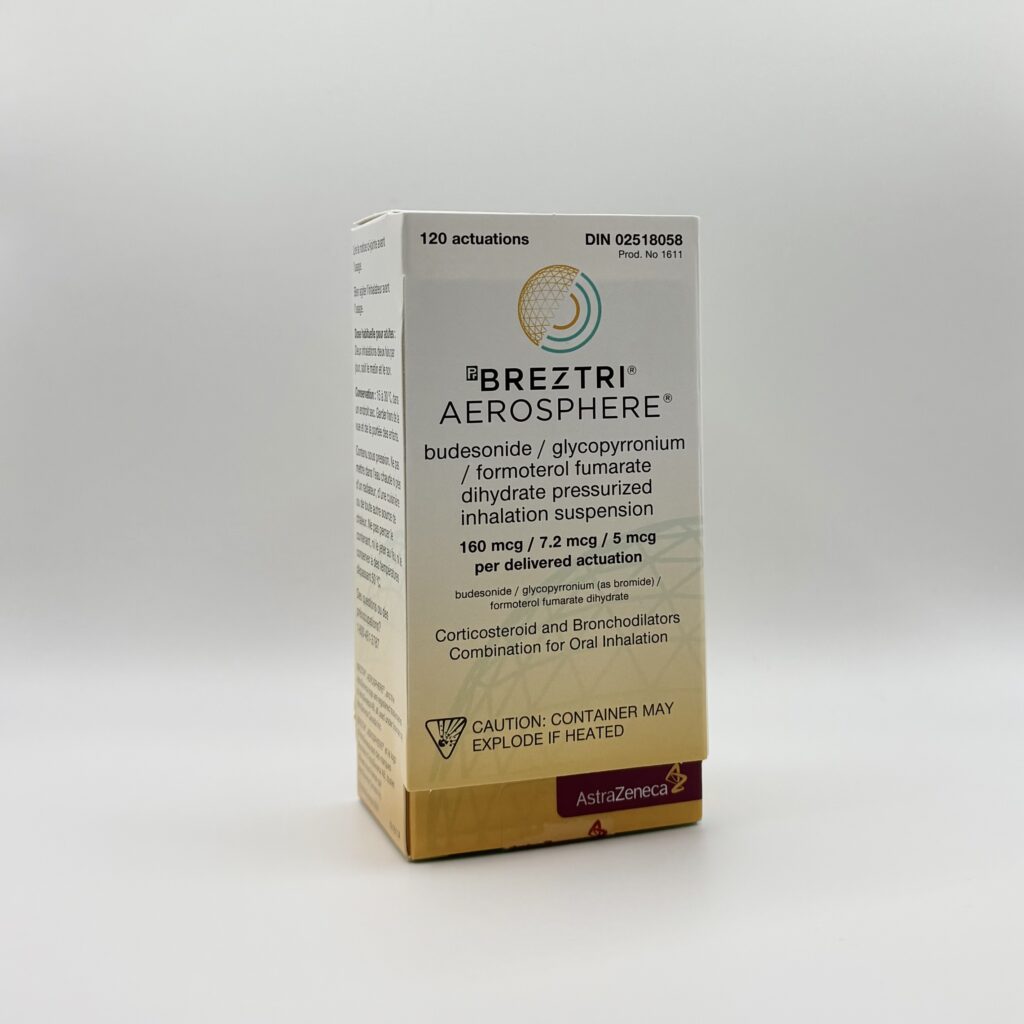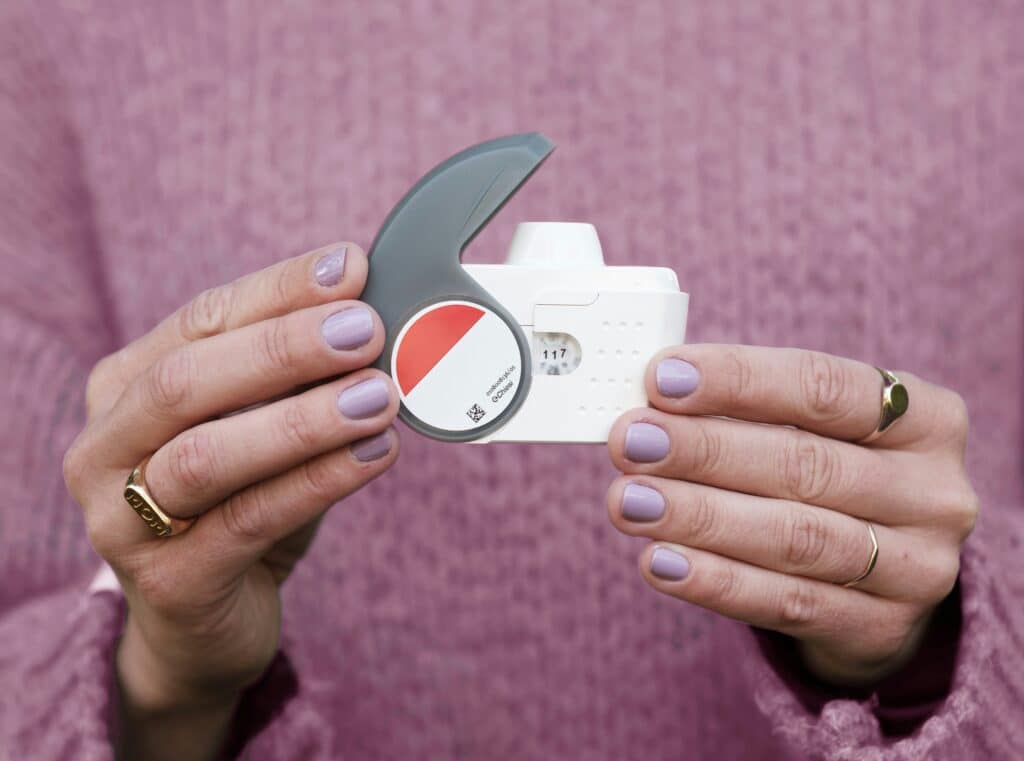Can You Use Breztri for Asthma? What Patients Should Know
Can You Use Breztri for Asthma? What Patients Should Know
The short answer
Breztri (budesonide/glycopyrrolate/formoterol) is a triple-therapy inhaler combining:
an inhaled corticosteroid (ICS)
a long-acting muscarinic antagonist (LAMA)
a long-acting beta agonist (LABA)
It’s commonly used for COPD. For pure asthma, treatment usually starts with ICS-based therapy and steps up as needed. Some patients with asthma–COPD overlap (ACO) or difficult-to-control symptoms may be considered for triple therapy under specialist care. Whether Breztri specifically is appropriate for your situation is a decision for your clinician, based on diagnosis, lung tests, and symptom history.
Why triple therapy exists—and where Breztri fits
Asthma and COPD both involve airway inflammation and narrowing, but they’re different conditions:
Asthma often starts younger, fluctuates, and responds strongly to anti-inflammatory (ICS) treatment.
COPD typically develops after years of smoking or pollutant exposure and features persistent airflow limitation.
ACO (asthma–COPD overlap) shares traits of both; these patients can benefit from approaches used in both diseases.
Triple therapy adds a LAMA to the usual ICS/LABA combination. The idea: more bronchodilation + inflammation control to reduce symptoms and flare-ups—especially helpful in COPD and sometimes considered in ACO or severe, uncontrolled asthma when guided by a specialist.
“Is Breztri for asthma?”—How clinicians think through it
Before choosing any triple-therapy inhaler for someone with asthma-like symptoms, clinicians will usually:
Confirm the diagnosis:
Spirometry (lung function testing), symptom pattern, triggers, smoking/vaping history.
Check current regimen & technique:
Are you using your inhaler correctly and daily? Are you rinsing after ICS to reduce thrush?
Assess control & risks:
Daytime symptoms, night awakenings, rescue inhaler use, recent oral steroid bursts, ER visits.
Step-up logic:
Many patients improve by optimizing ICS dose and adding a LABA first.
Triple therapy may be considered for ACO or persistent symptoms after appropriate step-up, often under pulmonary or allergy specialist guidance.
Bottom line: Some patients with features of both asthma and COPD may be considered for a Breztri-type approach, but this is not the standard first step for typical asthma.
Using a Breztri-style inhaler: technique essentials
Breztri is an MDI (metered-dose inhaler) that you inhale as a slow, steady breath. Technique matters:
1. Shake & exhale fully away from the inhaler.
2. Seal lips around the mouthpiece.
3. Press & inhale slowly (not too fast).
4. Hold your breath ~10 seconds if you can.
5. Exhale gently.
6. Rinse, gargle, and spit (important to reduce thrush from ICS).
Tip: If coordination is tricky, ask your clinician about a spacer for MDIs (if compatible).
Side effects to know
Common: Cough, throat irritation, hoarseness, oral thrush (rinsing helps), headache.
LAMA-related: Dry mouth, possible urinary retention in susceptible patients.
LABA-related: Tremor, palpitations in some people.
When to seek help: Chest pain, severe shortness of breath, swelling of face or throat, signs of infection that don’t improve.
Always tell your prescriber about heart conditions, glaucoma, urinary issues, or thyroid problems, and bring a full list of medications/supplements (some antibiotics/antifungals, certain antidepressants, or decongestants may interact).
Only your clinician can label your condition accurately. Common clues:
Asthma-leaning: Symptoms vary, allergies/eczema, strong response to ICS, normal lung function between flares.
COPD-leaning: Long smoking history, persistent daily symptoms, fixed airflow limitation on spirometry.
ACO: Combination of the above—variable symptoms and fixed limitation, history of both patterns.
Why this matters: Treatment—and whether triple therapy like Breztri is considered—depends on the label and response to prior steps.
Cost & access for U.S. patients
Inhalers can be expensive. A few ways patients try to manage costs:
Insurance benefits: Check your plan’s preferred inhalers and prior authorization steps.
Manufacturer savings: See if there’s a co-pay card or program you qualify for.
Prescription referral services: Some U.S. patients compare prices through reputable prescription referral services that connect with licensed pharmacies outside the U.S. If you explore that route, do it alongside your prescriber for safety and continuity. Over the Border Meds is one option patients sometimes use to compare pricing without a hard sales push.
Bring your financial concerns to your appointment; sometimes a small change (device type, dose, or brand) lowers costs meaningfully.
FAQs: Breztri and Asthma
Q1: Can I switch from my current ICS/LABA to Breztri for asthma?
Talk to your clinician first. Many patients improve by optimizing ICS dose and technique or adding a LABA before considering triple therapy. If your testing shows ACO or persistent symptoms despite the right steps, a specialist may discuss triple therapy options.
Q2: What’s the difference between Breztri and Trelegy?
Both are triple therapy. Breztri is an MDI; Trelegy Ellipta is a DPI (dry-powder inhaler). Some patients prefer one device type over the other based on inhalation style and ease of use.
Q3: If I have pure asthma, is triple therapy overkill?
Not necessarily—but it’s not the usual first choice. Asthma typically responds well to ICS-based regimens. Triple therapy is more often considered when there’s overlap with COPD or poor control despite appropriate steps.
Q4: I get oral thrush with steroid inhalers. What can I do?
Rinse, gargle, and spit after every dose. Ask about spacers for MDIs (if compatible) and confirm your inhaler technique. If thrush keeps recurring, your clinician may consider adjustments.
Q5: Can I use my rescue inhaler with Breztri?
Yes—keep your rescue inhaler for sudden symptoms. Triple-therapy inhalers are for daily control, not immediate relief.
Q6: Are there lifestyle steps that help as much as medication changes?
Absolutely. Quit smoking/vaping, consider pulmonary rehab, practice inhaler technique, manage allergies, and keep vaccinations up to date per your clinician’s guidance.
Q7: What should I bring to my appointment to discuss Breztri?
A symptom diary (daytime/night), rescue-inhaler use, any ER/urgent care visits, your current inhaler list, and questions about costs and technique.
Bottom line
Breztri is a powerful triple-therapy option commonly used in COPD and sometimes considered for patients with asthma–COPD overlap or persistent symptoms despite appropriate asthma steps—ideally under specialist guidance. The best path is a clear diagnosis, optimized technique, and a stepwise plan you and your clinician agree on. If cost is a barrier, ask about savings programs and consider comparing prices—including, if appropriate, through a reputable prescription referral service—so you can stay on the regimen that keeps you breathing easier.


